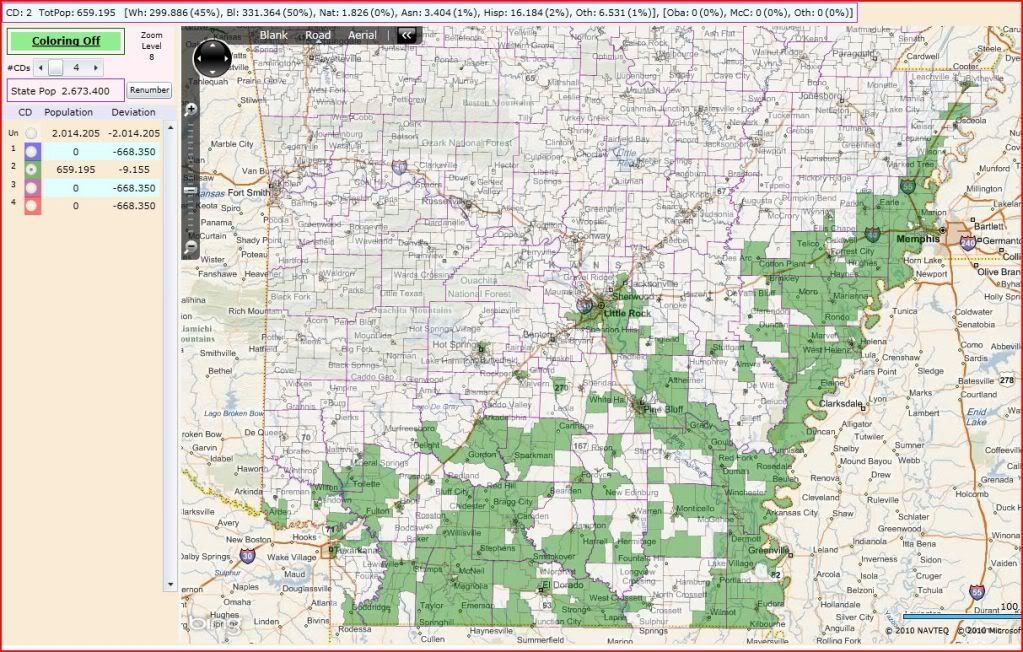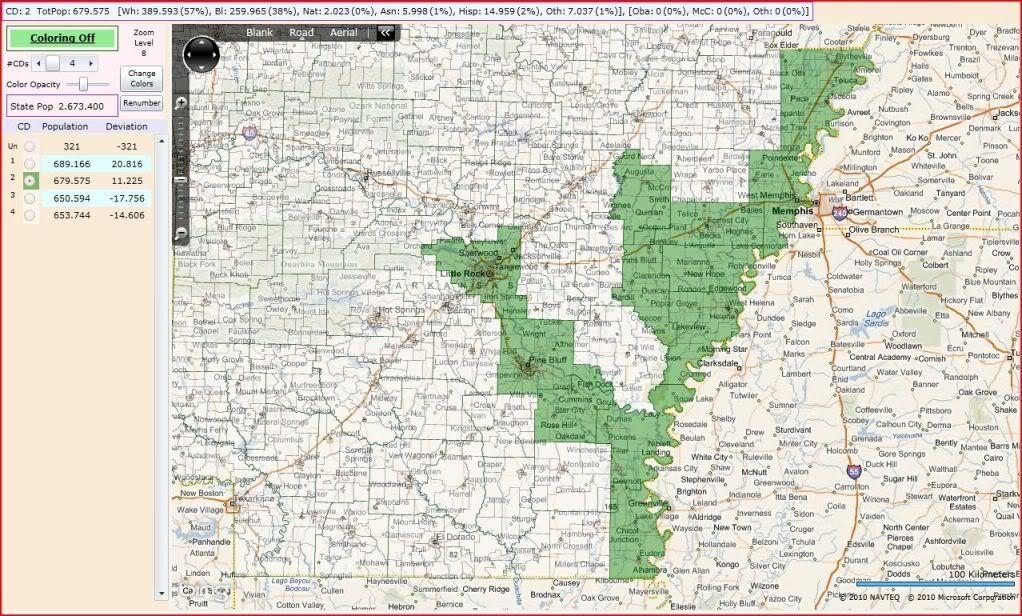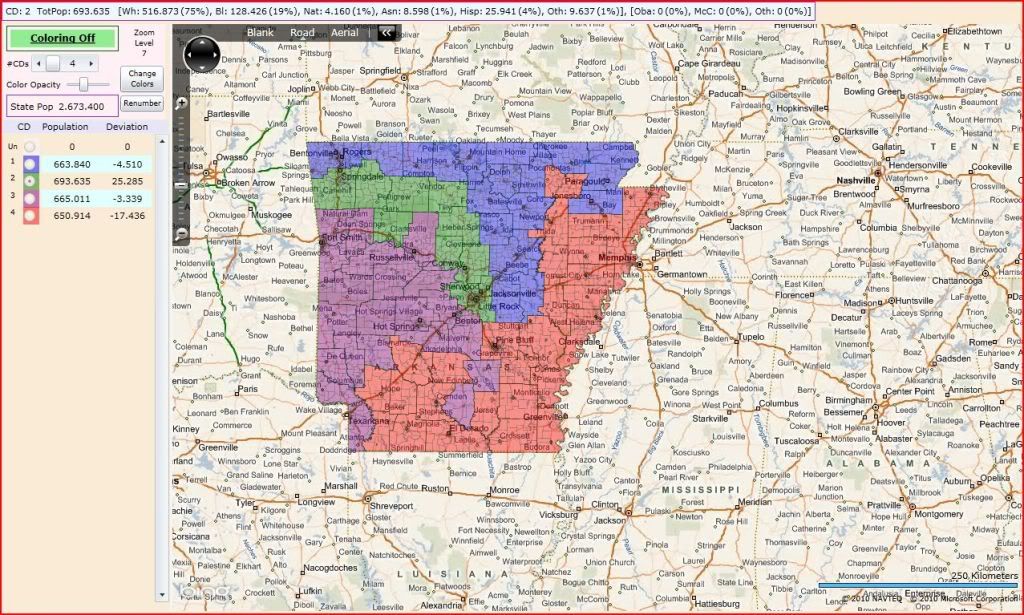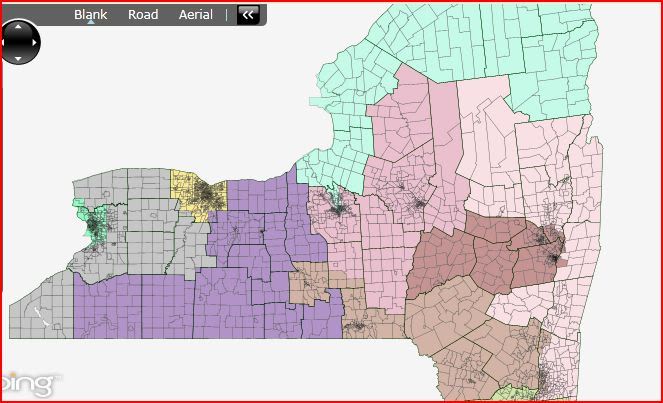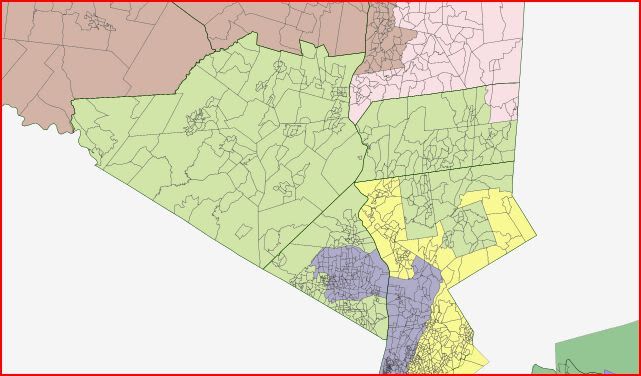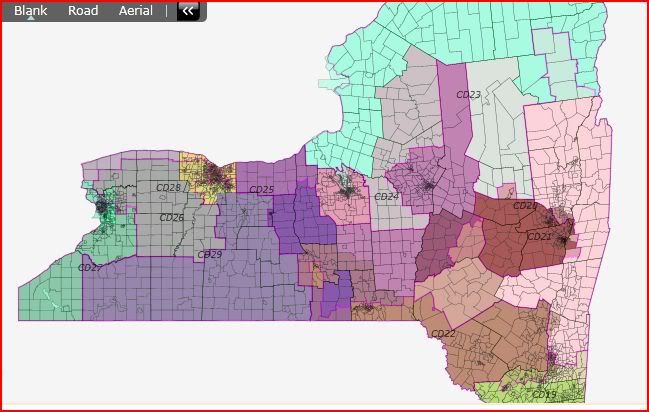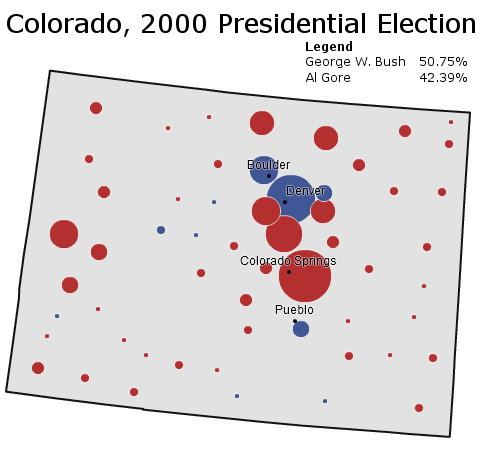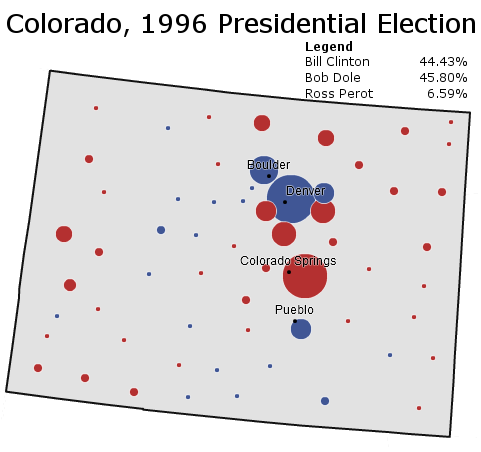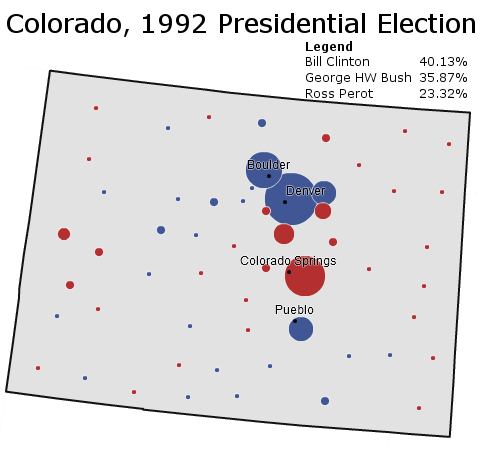Cross posted on my blog http://frogandturtle.blogspot….
By winning one race by only 157 votes, Republicans control one house of the Colorado State Legislature so Democrats do not hold the trifecta in Colorado anymore. So instead of a possible Democratic gerrymander where they could retake the 3rd and 4th districts, the Democrats will probably end up with a bipartisan incumbent protection which is more favorable to the Republicans. The new Republicans may feel vulnerable because many of the new ones are in marginal districts they won in a very Republican year so the Democrats might work out a deal at protecting those Republicans in exchange for controlling congressional redistricting. That is not very likely though and I drew this map assuming it is a bipartisan deal. Ed Perlmutter (D) of Colorado’s 7th district is strengthened as well as newly elected Scott Tipton (R) of Colorado’s 3rd district and Cory Gardner (R) of Colorado’s 4th Congressional district. In 2002, Colorado was 5-2 Republican and in 2008, it shifted to 5-2 Democratic. The Republicans have the majority in the delegation now though with 4-3. Although Republicans came back a bit in 2010, I still think Colorado is trending Democratic due to Democrats moving into the Denver area from California. This movement could make districts such as the 6th competitive in the future, but for now, all incumbents will be much safer. Now, here are the maps:
link for current maps: http://www.nationalatlas.gov/p…

Denver area
Colorado’s 1st Congressional District: Diana DeGette (D) Blue
Obama won 70% (estimate)
Demographics: 8% African American, 37% Hispanic, 49% White
Old Demographics: 10% African American, 33% Hispanic, 52% White
Major Cities: Denver, Barr Lake
Status: Safe Democratic
DeGette’s district actually becomes a bit more Republican. I removed the Democratic suburbs around Englewood and replaced them with more moderate suburbs such as Brighton and Barr Lake. DeGette may not like having the new territory (and she even loses some Denver neighborhoods) but since the district is still mostly in Denver, she should have no problems at all facing reelection. Her district is now the only minority majority district in Colorado.
Colorado 2 Jared Polis (D) Green
Obama won 66% (estimate)
Demographics: 15% Hispanic, 80% White
Old Demographics: 18% Hispanic, 76% White
Major Cities: Boulder, Broomfield, Aspen
Status: Safe Democratic
Polis was already safe but his district becomes a Democratic vote sink to shore up the 3rd district now held by Scott Tipton (R). If Democrats had the trifecta here, they could have unpacked this district to make the 3rd district Democratic enough for John Salazar (D) to retake but as it is, the 2nd will take Democratic areas out of the 3rd. The 2nd loses all of Adams and Larmier Counties. The 2nd is more of a Rocky Mountain district now by picking up Democratic ski resort counties such as Routt (Steamboat Springs,) Pitkin (Aspen,) and Gunnison (Crested Butte.)

North Colorado

South Colorado
Colorado 3 Scott Tipton (R) Purple
McCain won 52% (estimate)
Demographics: 22% Hispanic, 73% White
Old Demographics: 22% Hispanic, 73% White
Major Cities: Pueblo, Grand Junction
Status: Likely Republican
Under a bipartisan plan, Tipton will be strengthened but due to the current demographics, strengthening Tipton is difficult without making convoluted lines or putting the 4th district Republican in jeopardy. I strengthened Tipton by removing Pitkin County (Aspen) as well as some other ski areas that I put in the 2nd. I added conservative Park County and a few conservative rural counties in southeastern Colorado. Obama also over performed the district’s usual Democratic percentage here due to high turnout in the ski areas but the district may become competitive again if Hispanics keep trending Democratic. This would be an opening for Salazar who is Hispanic and could do win enough Hispanics to beat Tipton. Salazar has an uphill battle though with the ski areas in the 2nd district though.
Colorado 4 Cory Gardner (R) Red
McCain won 52% (estimate)
Demographics: 18% Hispanic, 78% White
Old Demographics: 19% Hispanic, 76% White
Major Cities: Fort Collins, Greeley, Lamar
Status: Lean Republican
Due to population purposes, strengthening this district was difficult but I still made Gardner safer. I removed some Democratic areas in Adams and Boulder Counties. The district needs to shed territory anyway due to population growth but I added Elbert County as well as the conservative rural parts of Adams and Arapahoe Counties. Betsy Markey (D) who held this district from 2008 to 2010 might be able to win in a Democratic year here but the district’s changes will make winning harder for her.
Colorado 5 Doug Lamborn (R) Yellow
McCain won 59% (estimate)
Demographics: 5% African American, 13% Hispanic, 76% White
Old Demographics: 5% African, 13% Hispanic, 75% White
Major Cities: Colorado Springs, Castle Rock
Status: Safe Republican
At a first glance, this district appears to undergo major changes but population wise, it does not. It just loses some rural counties to the west to make the 3rd district more Republican while picking up a large portion of Douglas County. Lamborn was already safe with strongly Republican Colorado Springs in his district but he is just as safe now, if not safer.
Colorado 6 Mike Coffman (R) Teal
McCain won 52% (estimate)
Demographics: 9% Hispanic, 82% White
Old Demographics: 8% Hispanic, 84% White
Major Cities: Parker, Centennial
Status: Likely Republican
Coffman’s district says pretty similar demographically but his district becomes more difficult to hold. He picks up a large portion of Lakewood which formally was in the Democratic leaning 7th district while losing part of heavily Republican Douglas County. Although Coffman may be safe now, Jefferson and Araphaoe Counties are becoming more Democratic and now that they have more people in the district, Coffman may be in trouble in the end of the decade. That should however give him enough time to become entrenched in his district so he can fend away any challenge. The Republicans probably want Coffman to have more territory but that will be hard because the 3rd and 4th districts need their Republican areas.
Colorado 7 Ed Perlmutter (D) Orange
Obama won 62% (estimate)
Demographics: 7% African American, 27% Hispanic, 60% White
Old Demographics: 6% African American, 26% Hispanic, 61% White
Major Cities: Aurora, Lakewood, Arvada
Status: Safe Democratic
Although Obama won 59% under the current lines, the district was originally drawn as a swing district so Perlmutter will probably have a safer district on his wish list. This is what the new map does by adding in a few Denver neighborhoods. It also picks up more of Democratic Aurora while losing the less Democratic parts of Lakewood. Perlmutter also gains more of Adams County by picking up more of Westminister although he loses the rural eastern part to the 4th district. Perlmutter should be much safer, although he seemed to be doing fine already.
Updated:
After looking at the suggestions, here is my new version of Colorado:

Colorado

Denver area
Colorado 1
10% African American, 39% Hispanic, 46% White
(minority majority!)
Colorado 2
13% Hispanic, 81% White
I send it to Fort Collins to help shore up the 4th but Polis should be safe since he still has Boulder, he picked up Routt County and Fort Collins went for Obama.
Colorado 3
22% Hispanic, 73% White
This district is now basically split by picking up Eagle County.
Colorado 4
19% Hispanic, 77% White
This district is now safely Republican with the loss of Fort Collins and the inclusion of Douglas County.
Colorado 5
6% African American, 13% Hispanic, 75% White
The lines are basically the same as the old district.
Colorado 6
9% Hispanic, 83% White
Colorado 7
5% African American, 25% Hispanic, 63% White
This district gets a bit whiter but picks up some white parts of Denver so this district is more Democratic than it looks.

Loading ...
